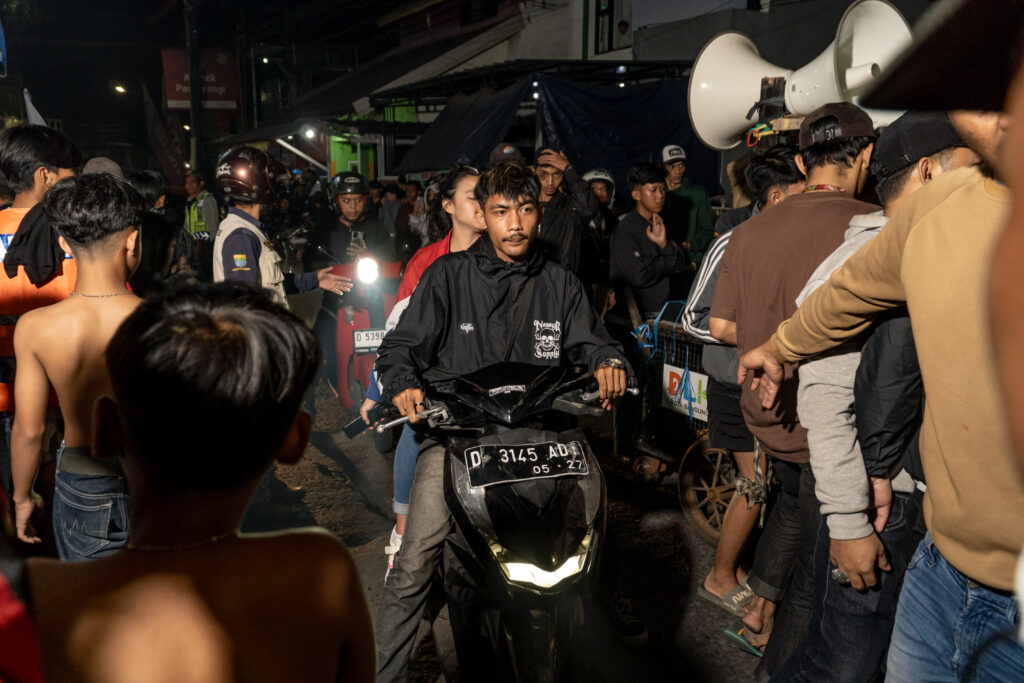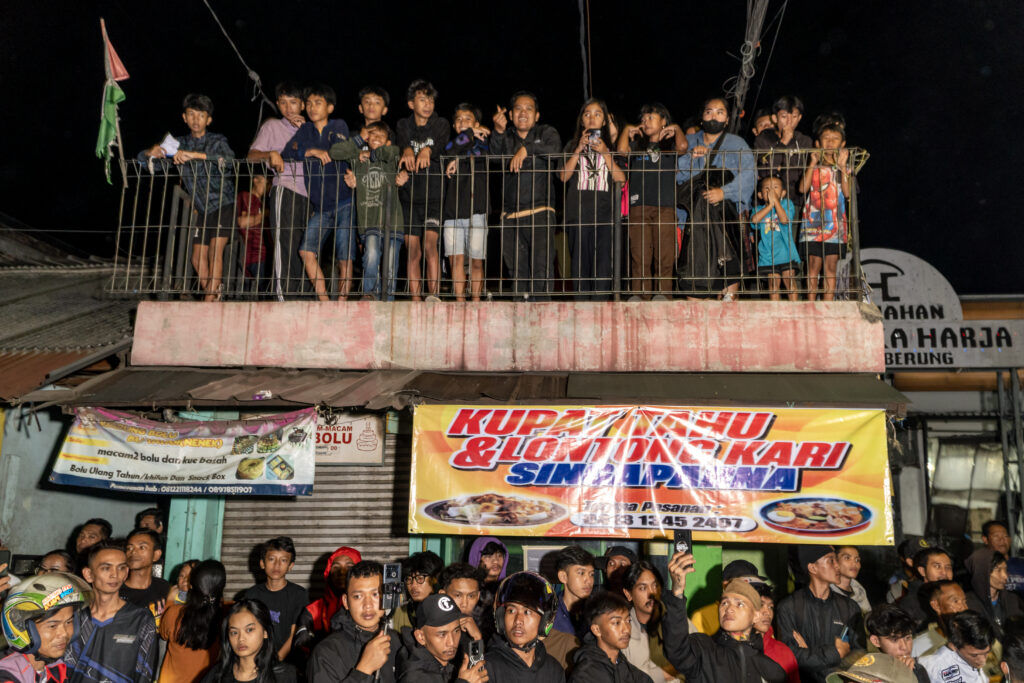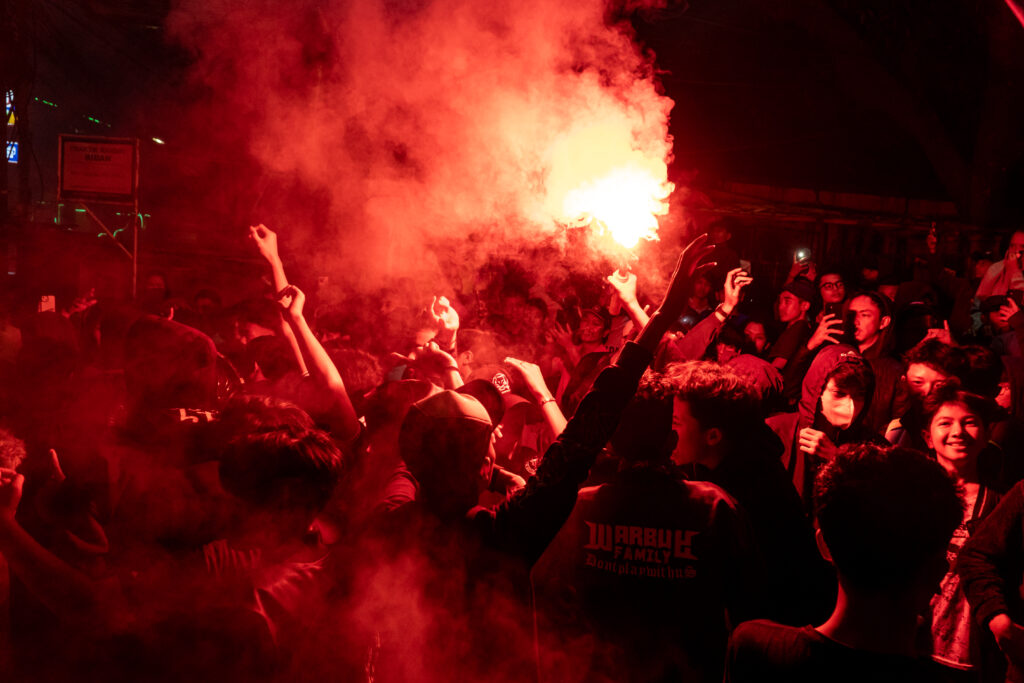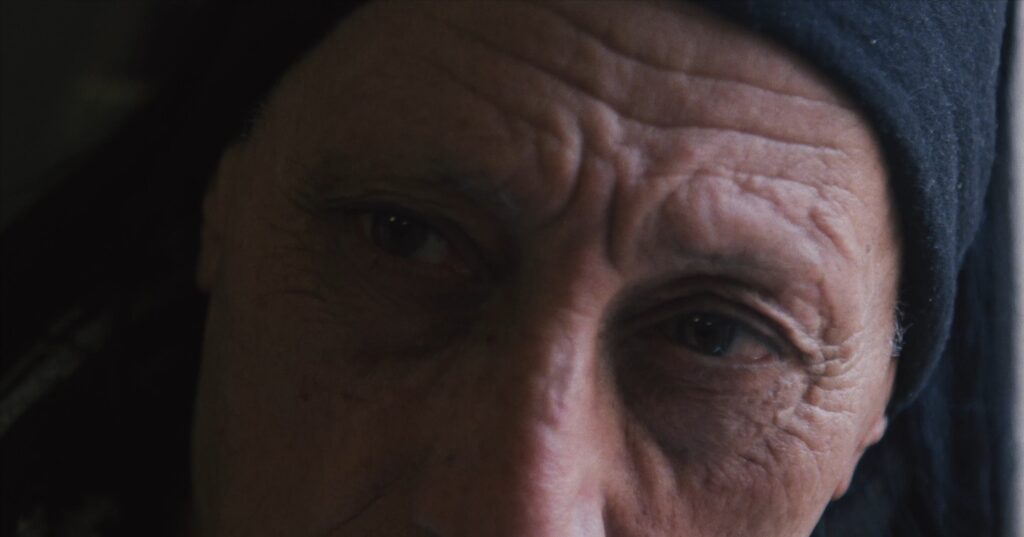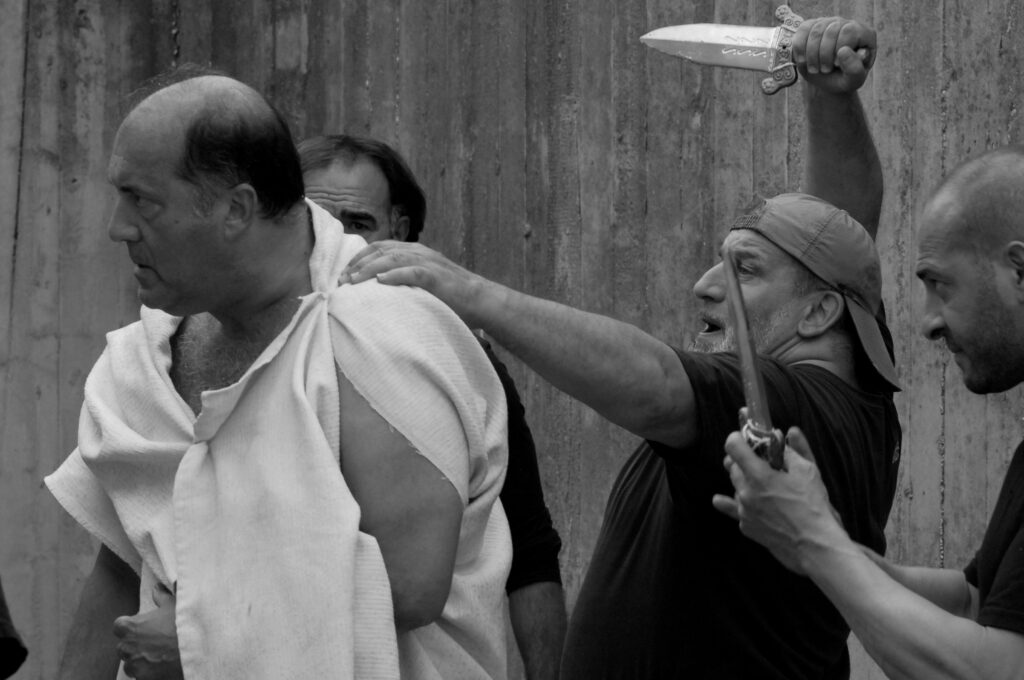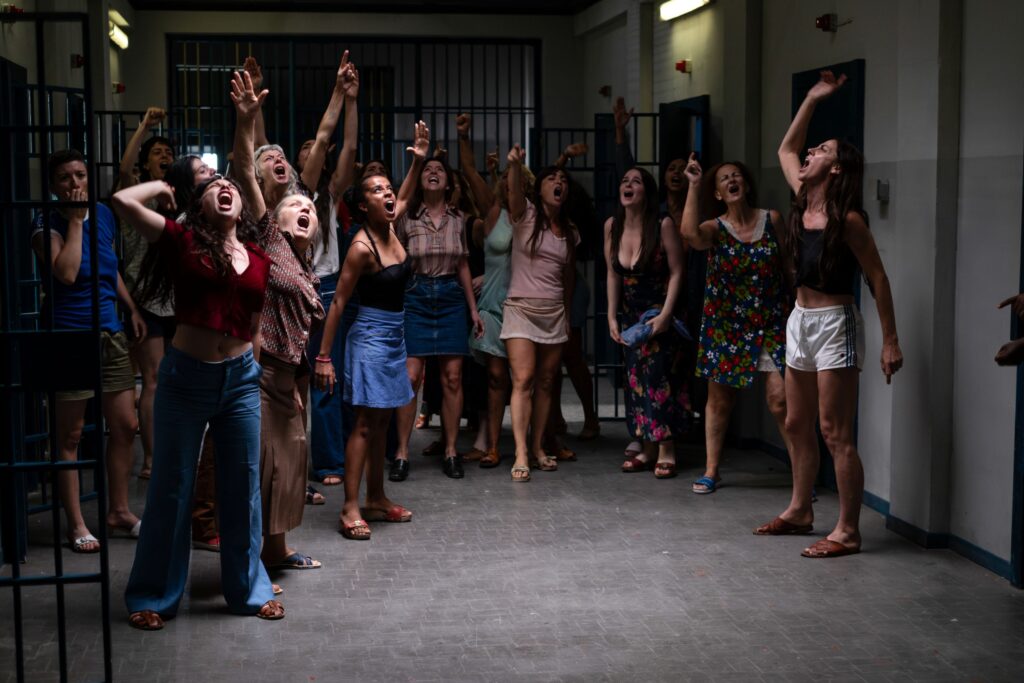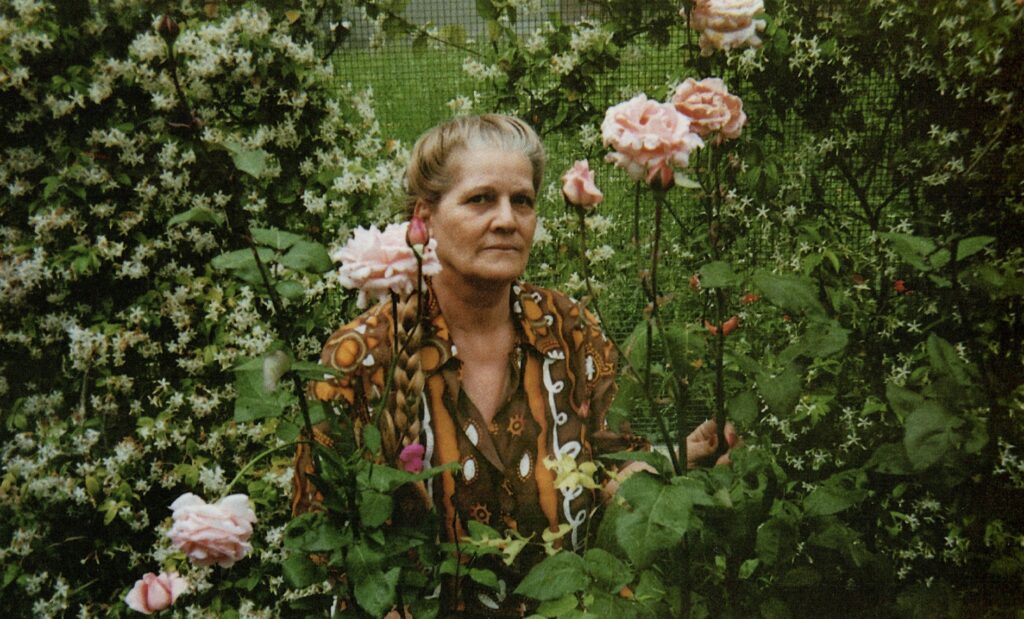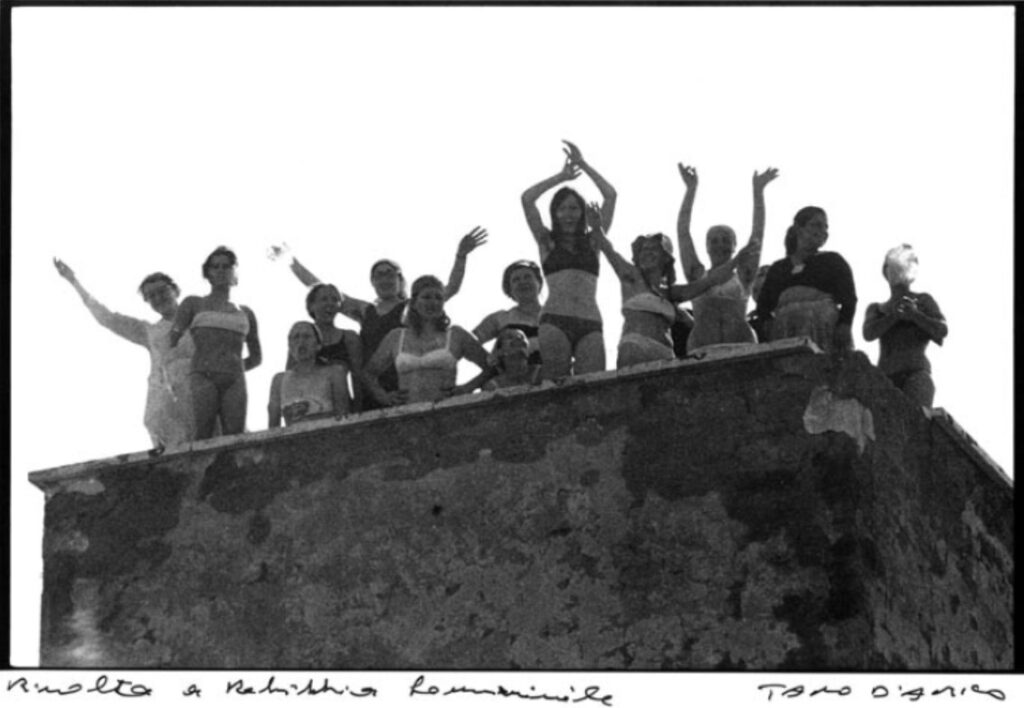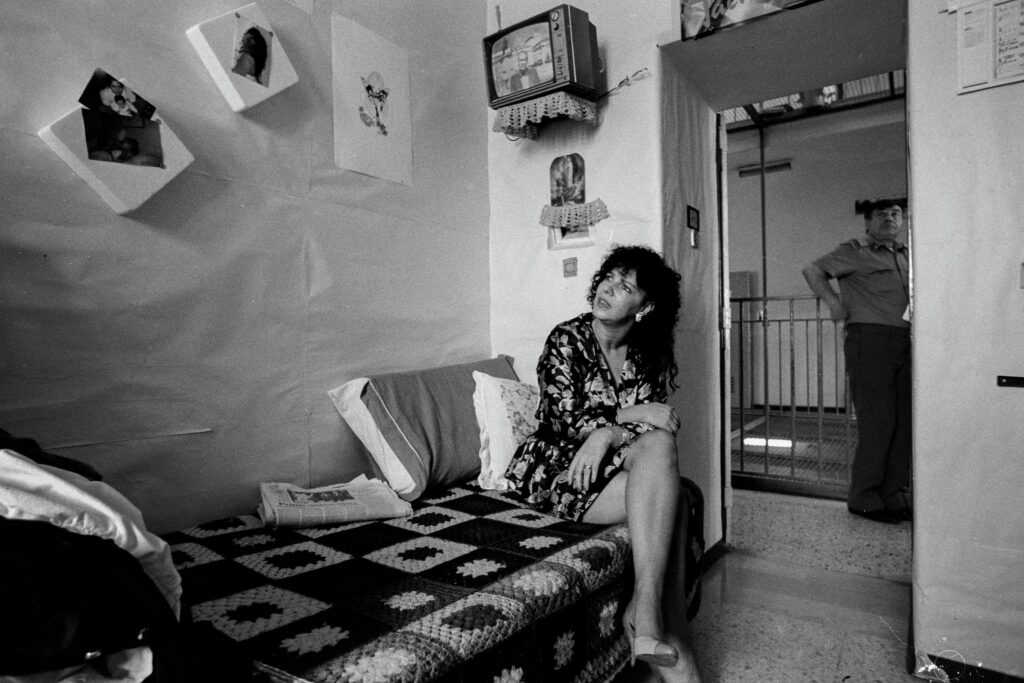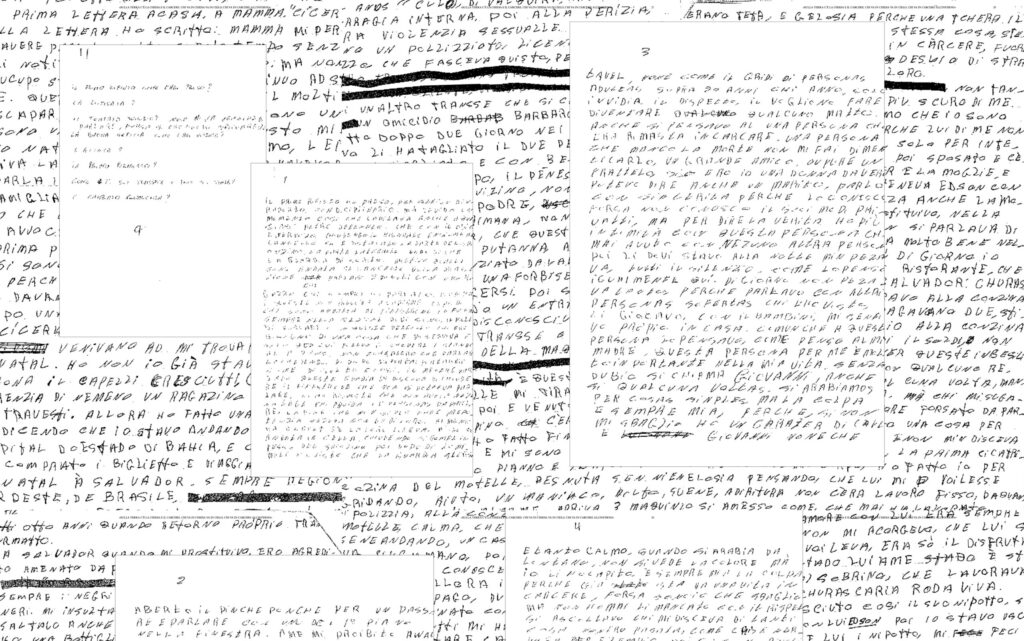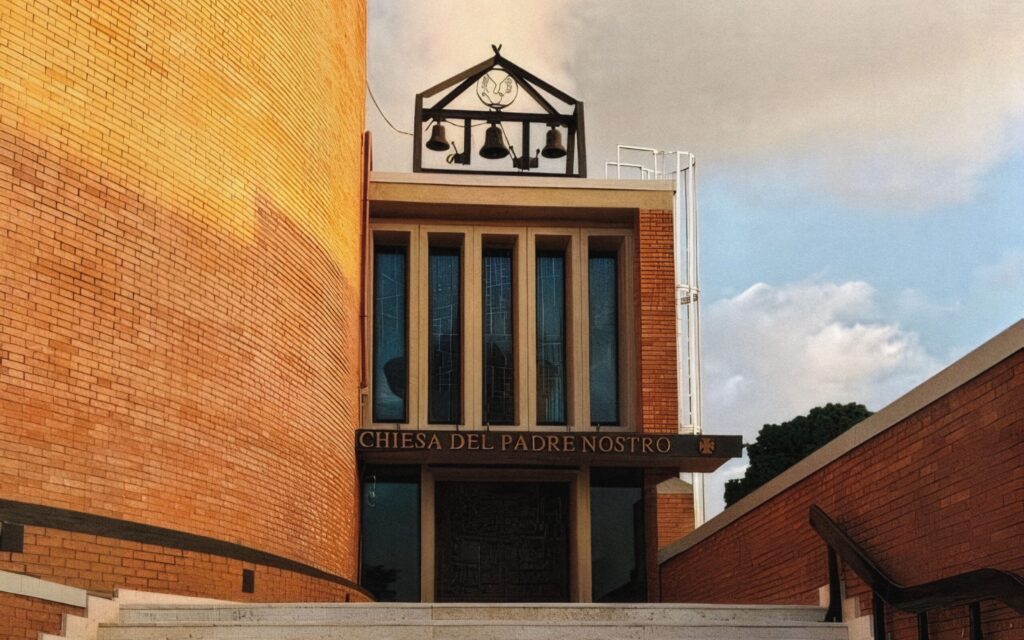All fun, no rules: oppositional tradition and punk attitude according to Reak Balebat Pakidulan
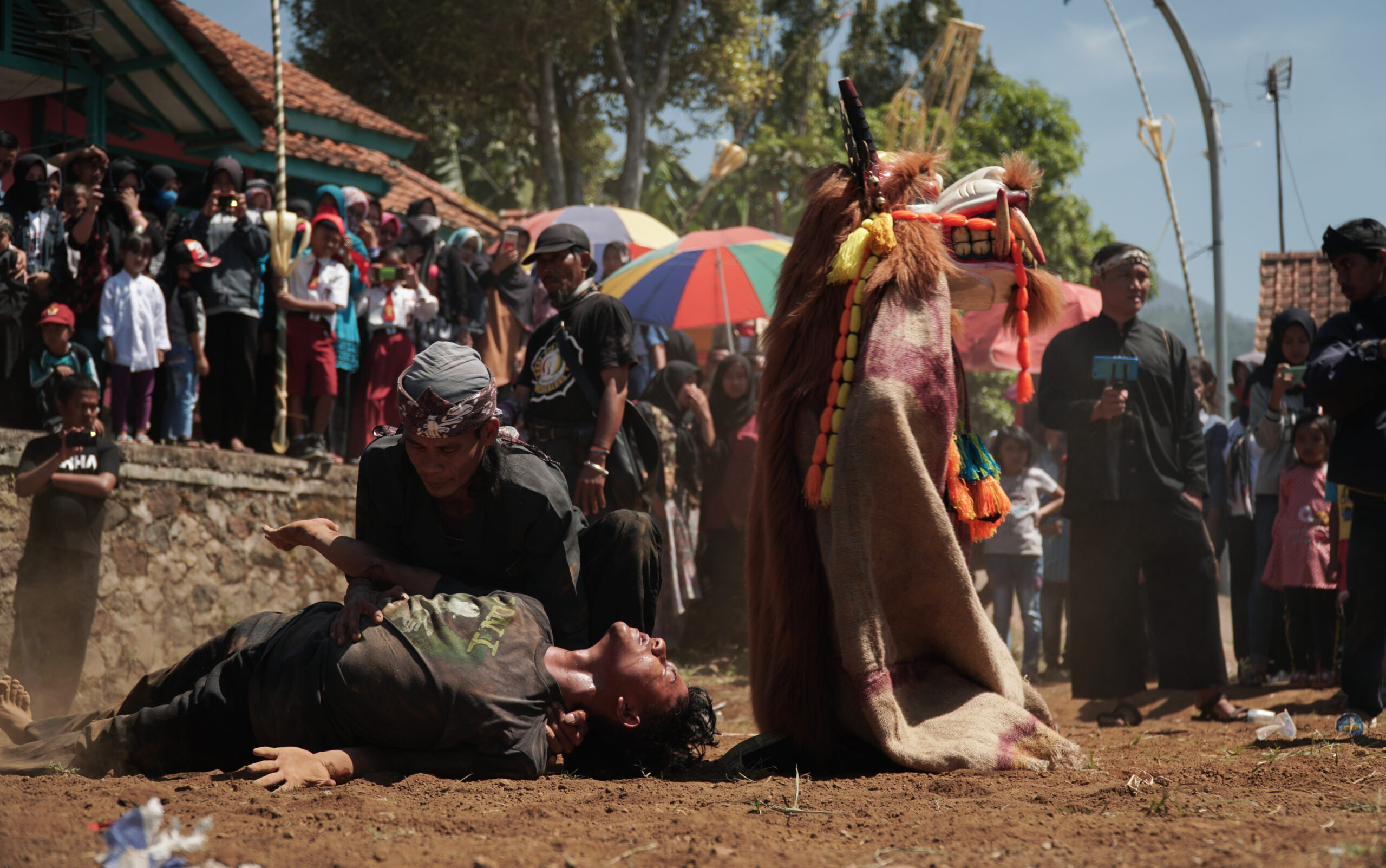
After a long ride on my motorbike, I arrive in Ujungberung from Bandung. It’s one in the morning, April of a few years ago, and we’re fully into Ramadan. I have come to watch the traditional trance ceremonial réak—the Bandung sub-regional variant of the popular “horse trance dances” present inside and outside Indonesia—during which a trance master coordinates a series of spirit possessions with the musical accompaniment of an ensemble of percussion and shawm. But this time is different. Tonight, the troupe Balebat Pakidulan performs the sasahuran: a practice that occurs during the holy month where performers execute different styles of music to create early morning noise and wake people for the first prayer and meal of the day before the fast starts. Everyone is preparing, stoked for the night to come. A musician announces: “It’s going to be very noisy and fun! Since during Ramadan it is forbidden to play proper musical events, this is our way to use the sahur as a little social demonstration!”.
The event was advertised on social networks with a flyer reminiscent more of a punk event than a religious parade. In the illustration, a collage of different comics foregrounds someone wearing a balaclava and two figures in military attire brandishing audio-weapons. The background is an anonymous metropolitan centre swarming with people and an anarchist symbol looming from one of the buildings. The flyer includes the event location, Jalur Krazz, a play on the word keras (coarse/raw), referring to the street from Balebat Pakidulan’s headquarters in the sub-district of Cigending to the city’s traditional market, Jalan Nagrog. The event is organised by Batimmore Culture, a youth collective from the city of Bandung’s peripheries, which organises traditional and contemporary music events, of which Balebat is a part. Named after a crasis of the words Bandung Timur (East Bandung), the collective’s name is also a wordplay on Baltimore, in the same way that Bandung’s Ujungberung district has been transformed into Ujunbronx, likening the underground and gang music imagery of East Coast US rappers with the Bandung District. The markers, signifiers of oppositional subcultures, anarchist symbols, punk imagery, and hip-hop geographies, are invigoratingly off-kilter for a religious and traditional performance. One of their banners proclaims: “New Wave of Traditional Culture,” with a design clearly inspired by metal music aesthetics, complete with its otherworldly and undead imagery.
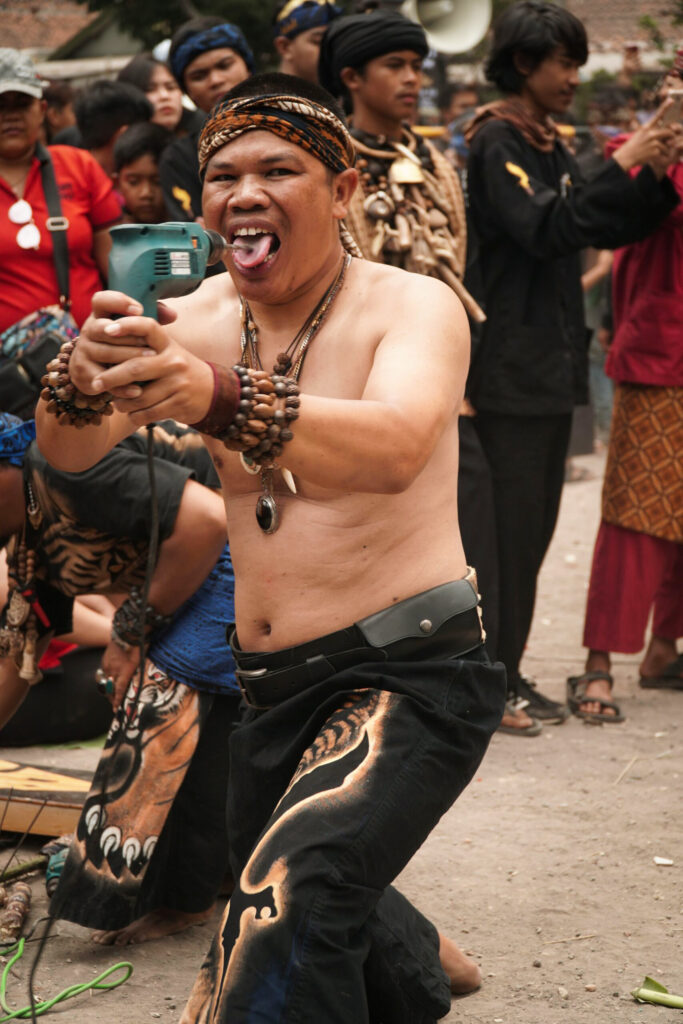
Around two in the morning, we gather in the streets for the event. The troupe’s portable PA is carried from their headquarters to the main road. They start playing, breaking the night’s silence. The lively interlocking rhythms of the dogdog réak percussion vibrate in space, accompanied by the amplified, piercing sound of the tarompet double reed instrument and singer’s vocals. The singer starts shouting in the microphone: “Sahuuuur, Sahuuuuuur! Wake up and pray! Sahuuur!”. The Balebat troupe begins marching from the small, labyrinthine alleys to the main road. In a few minutes, the anonymous, deserted streets fill with young boys and girls observing and dancing with all the performing groups; there must be around 3000 people. The youth occupy the street yelling at each other: howling, clapping their hands, and throwing firecrackers every other minute, saturating the intense collective soundscape with individual effervescence and sonic power.
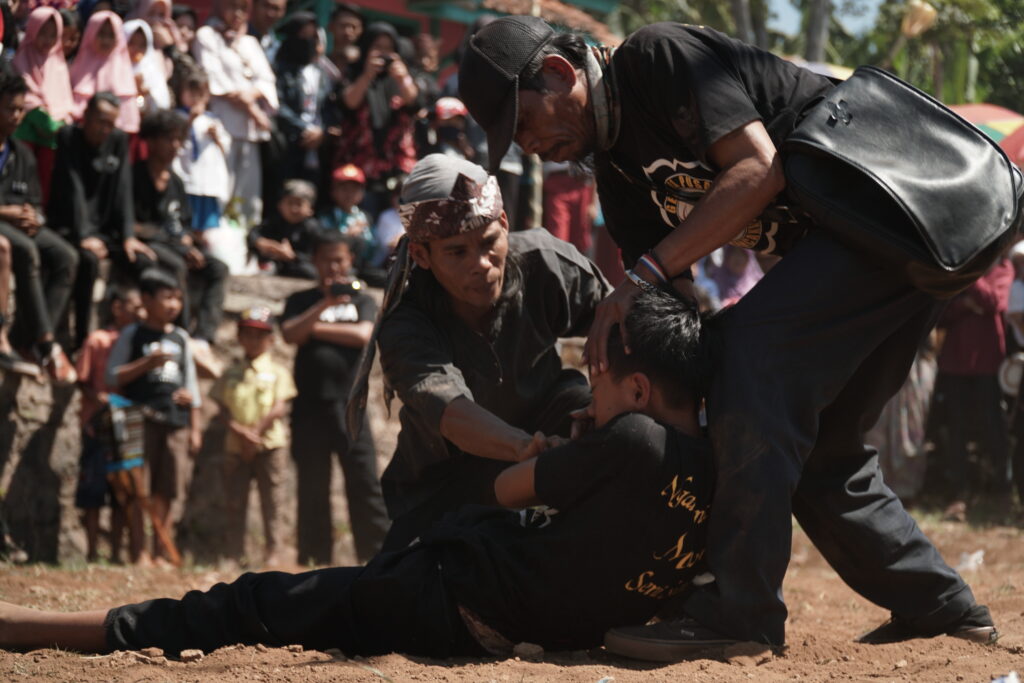
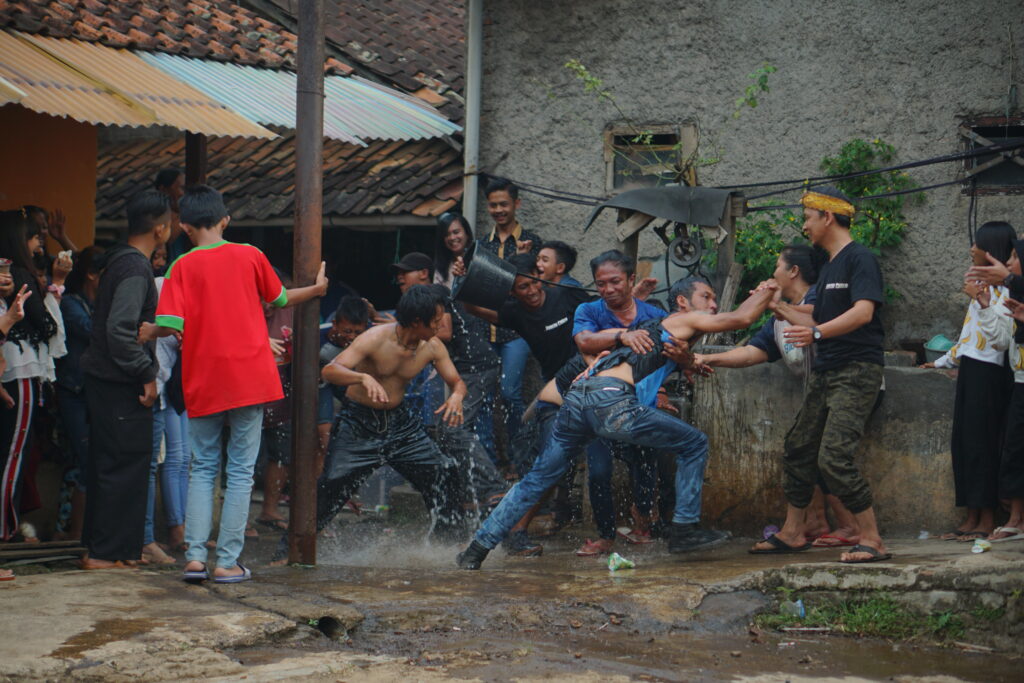
"The youth occupy the streets, yelling at one another—howling, clapping their hands, and setting off firecrackers every few minutes, saturating the intense collective soundscape with bursts of individual effervescence and sonic power."
The sound level is almost unbearable. The overpowered PAs’ volumes are very aggressive, coming from all directions, while the whole place fills with the coloured haze of smoke bombs. Blare is coming from everywhere. People jump on each other’s backs swaying banners: “Care for your loved ones, be good to people,” and, “Stop the arrogance in our community.” Punks, metalheads, hooligans—the mixed crowd dances and jumps, blending traditional dance moves with punk stunts, throwing each other around in the air, screaming and laughing. The noise surrounds me, merging with the flow of cars and motorbikes passing through the clogged parade. The energy is palpable. Everyone is clearly happy and proud of this place. After an hour, Kinoy, friend and singer of the famous second generation Ujungberung death metal band Undergod, appears. Since a long time, he’s the one who has invited réak troupes to open their shows. From the middle of this chaos, he runs towards me shouting: “This is Ujungberung! Have you ever seen anything like this?!”. Laughing, raising my voice to be heard, I answer: “No, there is nothing like this anywhere else.”.
This event showcases the proximity of a traditional music phenomenon like réak to contemporary urban subcultures, from punks to hooligans to metalheads, pointing at its in influencing underground politics and thus demonstrating how far it is from being a form of culture removed from the nation’s contemporaneity. This is at least the case with réak troupe Balebat Pakidulan, translated literally as “The rising sun from the South”.
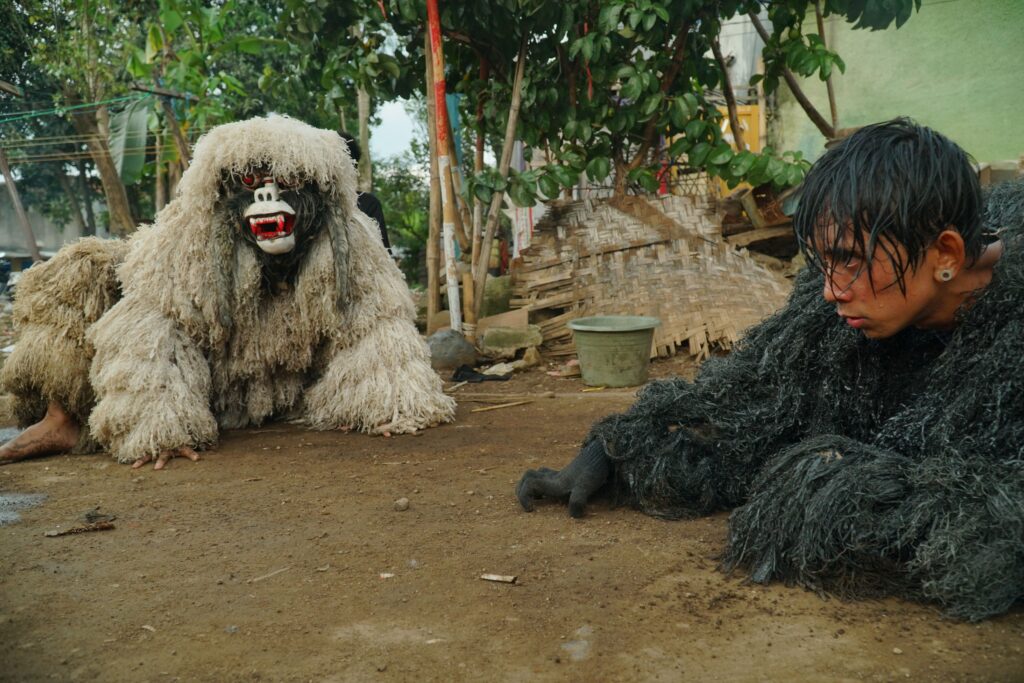
Réak is a trance ritual which originated in Bandung, a subregional variant of horse trance dances, a group of pan-Indonesian performances known under various names such as jaranan and jathilan. During the event, usually organised to celebrate events like circumcisions and weddings, a trance master (ma’alim) coordinates spirit possessions of performers and audience members with the musical accompaniment of an ensemble of wooden single-head conical drums (dogdog) and a shawm instrument (tarompet). Each troupe is composed of 15 to 30 people, usually mostly male blue-collar workers as réak is believed to be a violent, masculine performance.
During réak, the stage (the host’s backyard) is prepared early in the morning with offerings for the Karuhun: human ancestors’ spirits. The performance starts at nine in the morning with an ouverture. After a phase of freeform dance, the ma’alim indicates that the area has filled with enough power and that spirits are attending. The music’s tempo doubles, and the mischievous animal spirits Karuhun and Jurig Jarian are invited by the ma’alim to take control of the individuals to deliver messages to their relatives, perform dances, or show off their powers by chewing glass, devouring live chickens, and so on. Subsequently, a dancer is helped to enter and dance the Bangbarongan, an anthropo-zoomorphic costume and tutelary spirit. Wearing the costume implies the eventuality of possession, thus requiring performative and spiritual preparedness. After a parade around the village and a second performance at the host’s house, the event finishes at five in the afternoon.
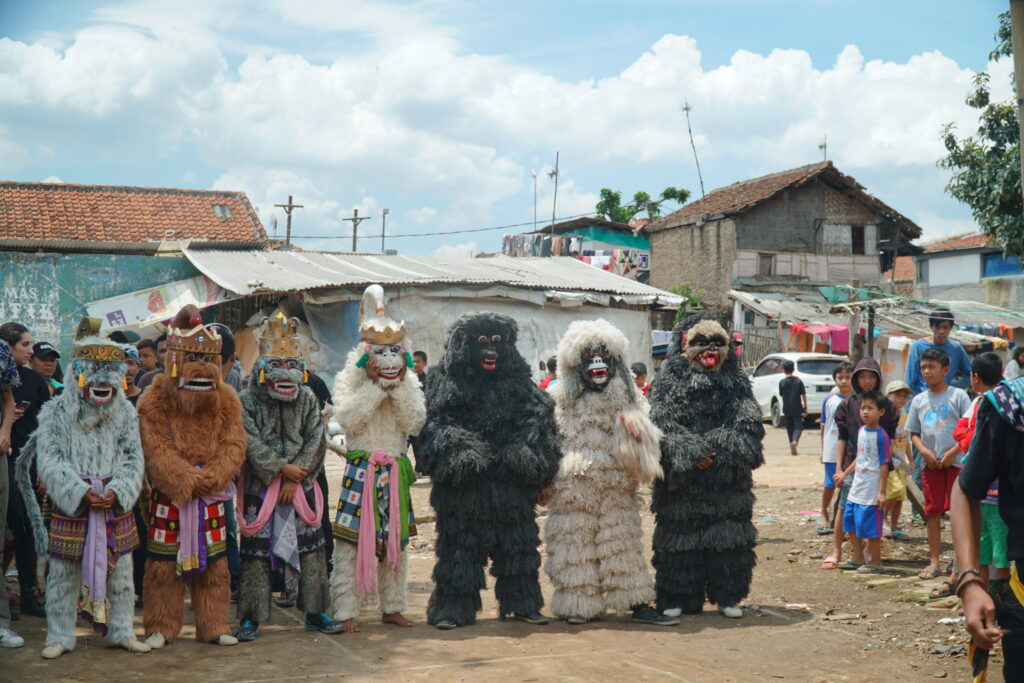
Metal’s transnational aesthetic has influenced every aspect of this specific troupe: from uniforms designed by punk and metal creators to their way of performing réak, which includes practices similar to stage diving and moshing.
When I asked attendees what they liked about réak, they often replied that it is especially the horror and comedy offered by the spirits, the chaotic mosh-like social ambience, and the ear-shattering, energising music. Given the focus on the supernatural and the overpowering sonic features, it’s not hard to imagine why metalheads have slowly become an integral part of the audience. Indeed, born as an agrarian regional performance for celebrating human milestones, réak and its performers now exist in a landscape of mass-consumed popular music, from indie to hip hop. Given the aesthetic and social class similarities between réak and metal, it is unsurprising that réak practitioners come as much from traditional music backgrounds as from the musical underground. This is particularly the case for Balebat Pakidulan, who have collaborated most often with Undergod.
Composed mostly of performers aged between 13 to 25, which is much younger than the middle-aged men that usually make up these groups, Balebat Pakidulan are known for conjuring spirits in their wildest versions, thus being dubbed by metalheads as the most extreme réak troupe. With t-shirts and banners inspired by contemporary underground music creators and presenting their first DIY recording on Bandcamp as a “raw demo”, members of Balebat Pakidulan have also founded two hardcore punk bands, Crack and Bottled Violent; outfits which, faithful to the movement, denounce the corruption and dominance of state authorities. Metal’s transnational aesthetic has influenced every aspect of this specific troupe: from uniforms designed by punk and metal creators to their way of performing réak, which includes practices similar to stage diving and moshing. Their performances both maintain an important ceremonial function of renewing connections between the community of human and non-human entities, while at the same time making space for youth and subcultures to thrive and amplify the turmoil of informal, grassrooted politics. While older, réak groups value showing respect towards the authority, the human, or the supernatural, on the contrary, Balebat Pakidulan claims to like réak “because there are no rules,” and “ it allows us to show unity, protect our communities, and demonstrate who we are.”. Their comments often come out with proud smirks and the occasional unapologetic, mischievous stare proper of those who know that musical crowds can become weapons.
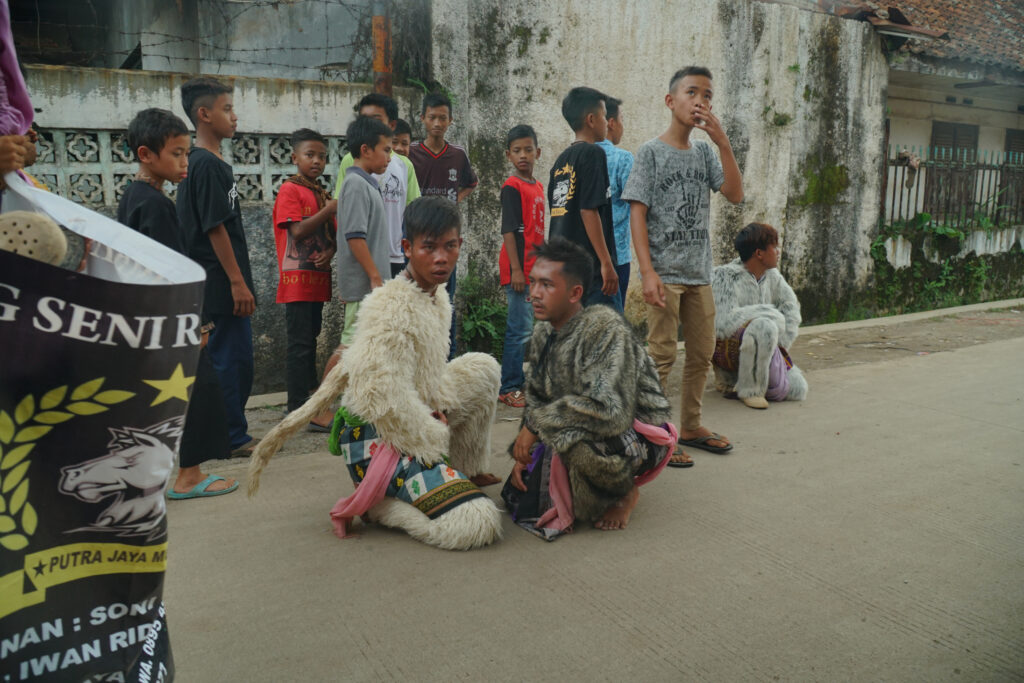
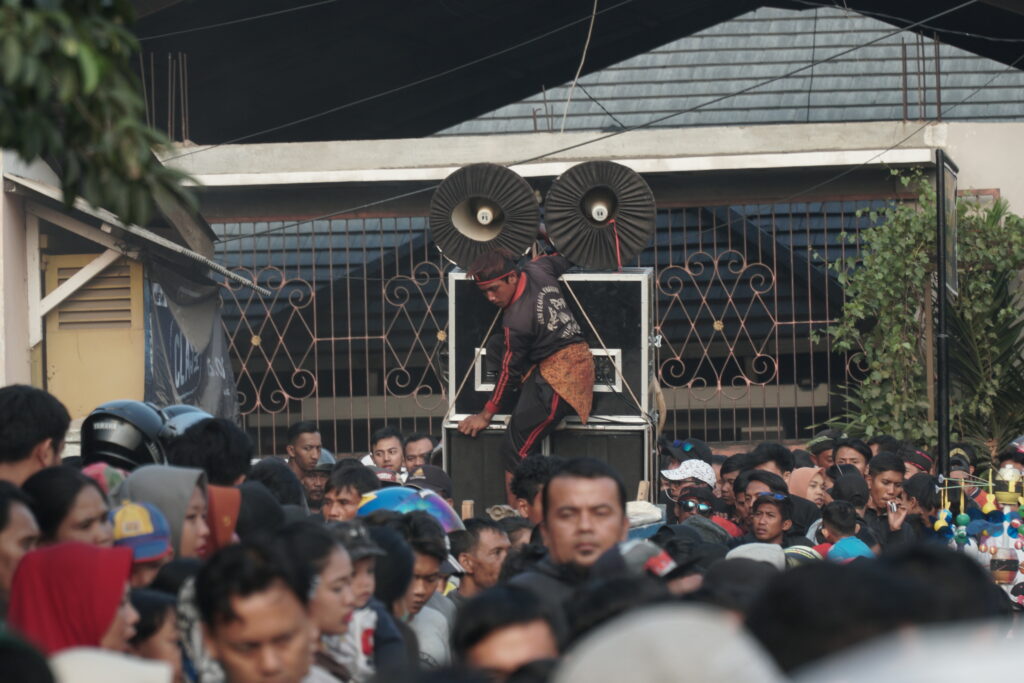
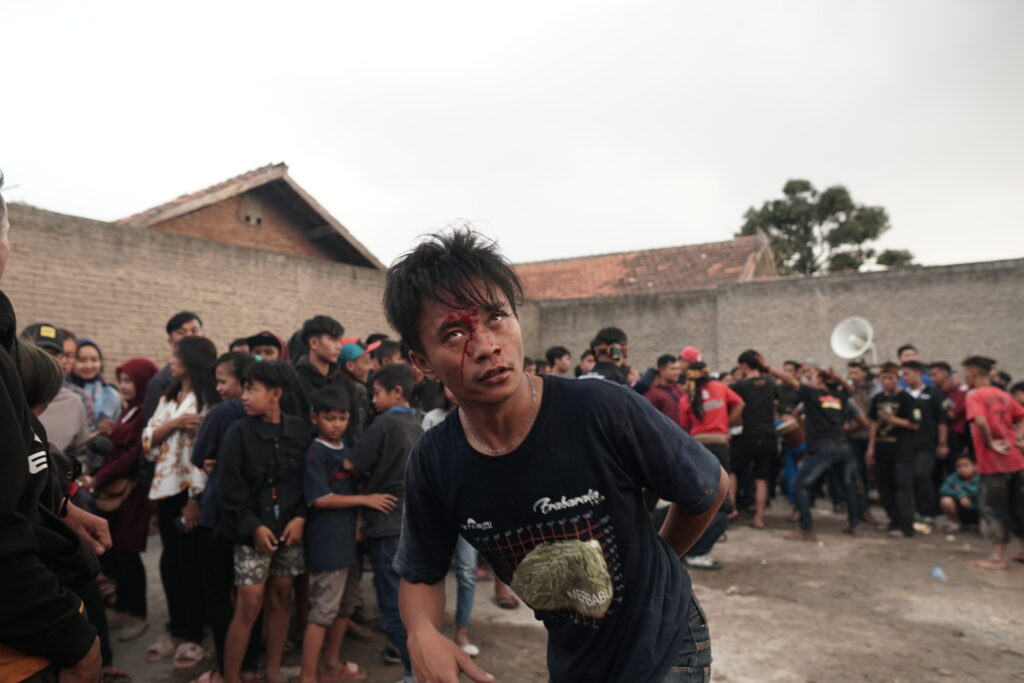
If they’re so appreciated and supported by metal audiences, why do Balebat members mainly play in punk bands? Far from being a coincidence, this preference brings the history of this “traditional underground” full circle. While Bandung’s oppositional music subcultures had started as a social device to oppose oppressive governmental institutions, enfranchising with other underground phenomena notwithstanding their musical genre of choice, now many things have changed: the politically charged musicality of metal bands has apparently vanished in contemporary Bandung, absorbed by corporate sponsors, mainstream media participation in television programmes, and even collaborating with political propaganda. For example, we can see it by observing the behaviour of president Jokowi, who, on the one hand, has worn a Napalm Death t-shirt, while on the other, attempted to place members of his own family into political positions by changing the constitution.
On the contrary, the “No Masters / No Slaves” attitude of punk has remained relatively unscathed and unpolluted by money and politics. Balebat were the only metal group to participate in recent protests against mass evictions in Bandung, alongside alternative bands from punk to noise to shoegaze. If “all music genres can be categorised as underground if the genre or band adheres to underground methods” as quoted in Rottrevore Mag in the 1990s, then these subcultures’ political stance has metastasised into Bandung’s traditional movements, which are today as inspired by the caveats of the ancestors as much as by Fugazi lyrics.
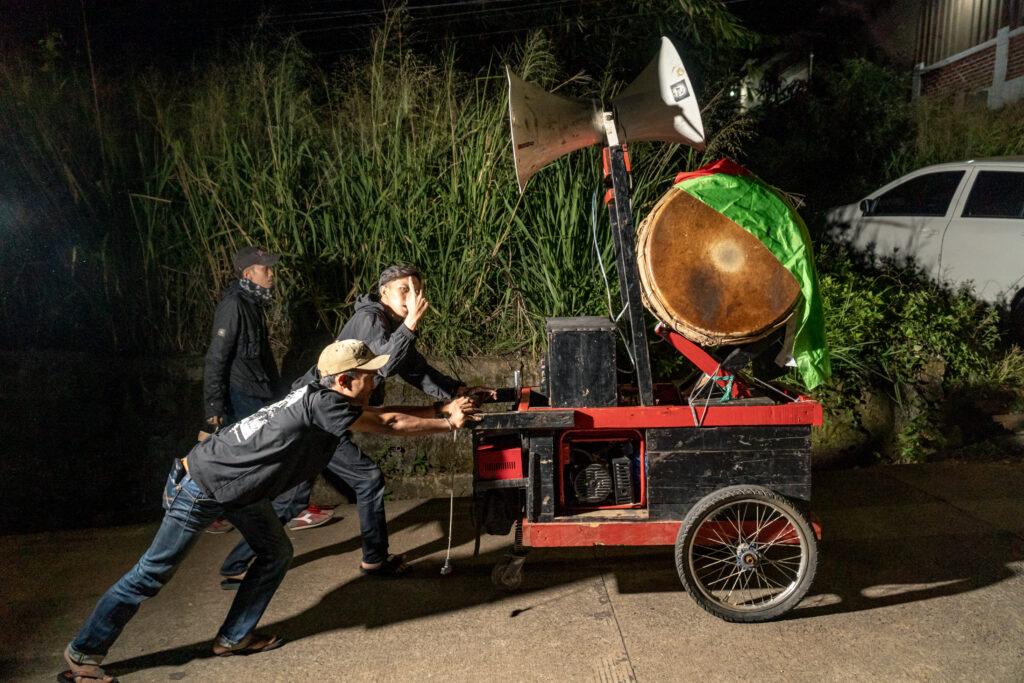
All in all, Balebat’s case show us how ethnicity, locality, tradition and cosmopolitanism are not isolated phenomena but mutually influenced entities thriving on cross-generational exchanges based on the need to mobilise communities and establish genealogical affiliation between seemingly unrelated youth happenings, that are in this case connected by a predilection for distorted, loud sonic overdrive. If nothing else, watching the phenomenon grow through the decades, we can see how loud popular music—identified first as an enemy of tradition and then exploited to disempower regional communities—has always fueled social spaces in which a lesson of resistance and opposition flowed from metal and punk to traditional music and back to the underground culture.
Now, the challenge of these subcultures, whether ethnolocal or urbanistic, is to remain relevant in an era when musical transgression is no longer a threat but a commercial asset. In the past, Bandung’s musical subcultures achieved one of the most difficult goals: to succeed in imposing themselves and their lifestyles on a totalitarian state that wanted them to be marginal losers—but at what cost? There is no answer yet. This article only serves to remind us all that cultural resistance is possible. Returning from a year of research in Bandung, the centre of clashes between students and state forces from the 1970s to the 2020s, I can say that when opening social media and seeing videos of protests against Indonesia’s increased militarisation following the election of new president and former general Prabowo Subianto, demonstrations against evictions or government’s development plans, politically-engaged traditional performances, or independent coffee plantations unaffiliated with unfair land-use laws, a Sepultura t-shirt or a Minor Threat patch will pop up.
